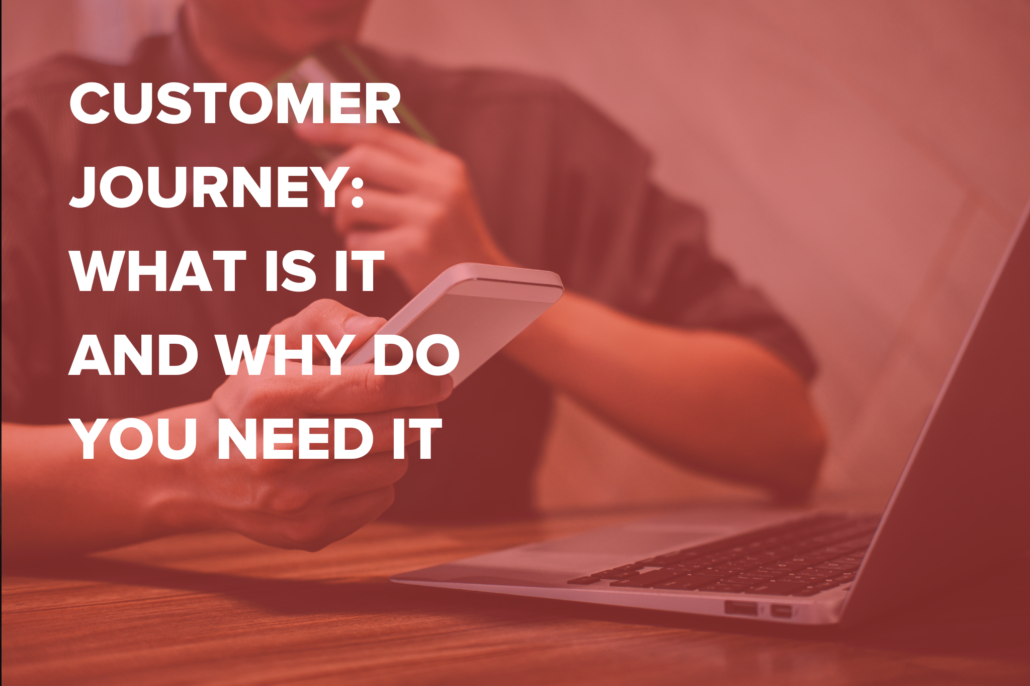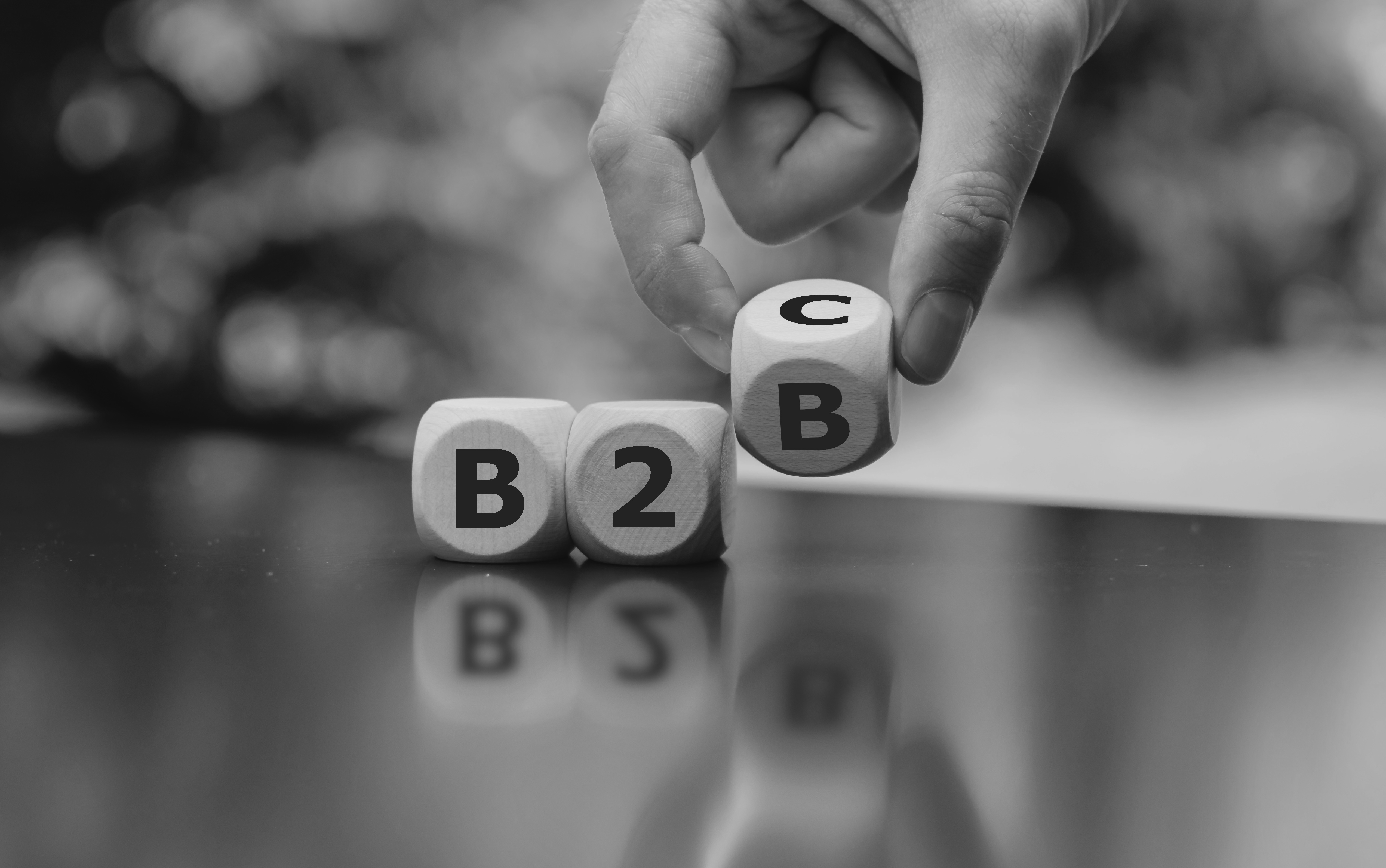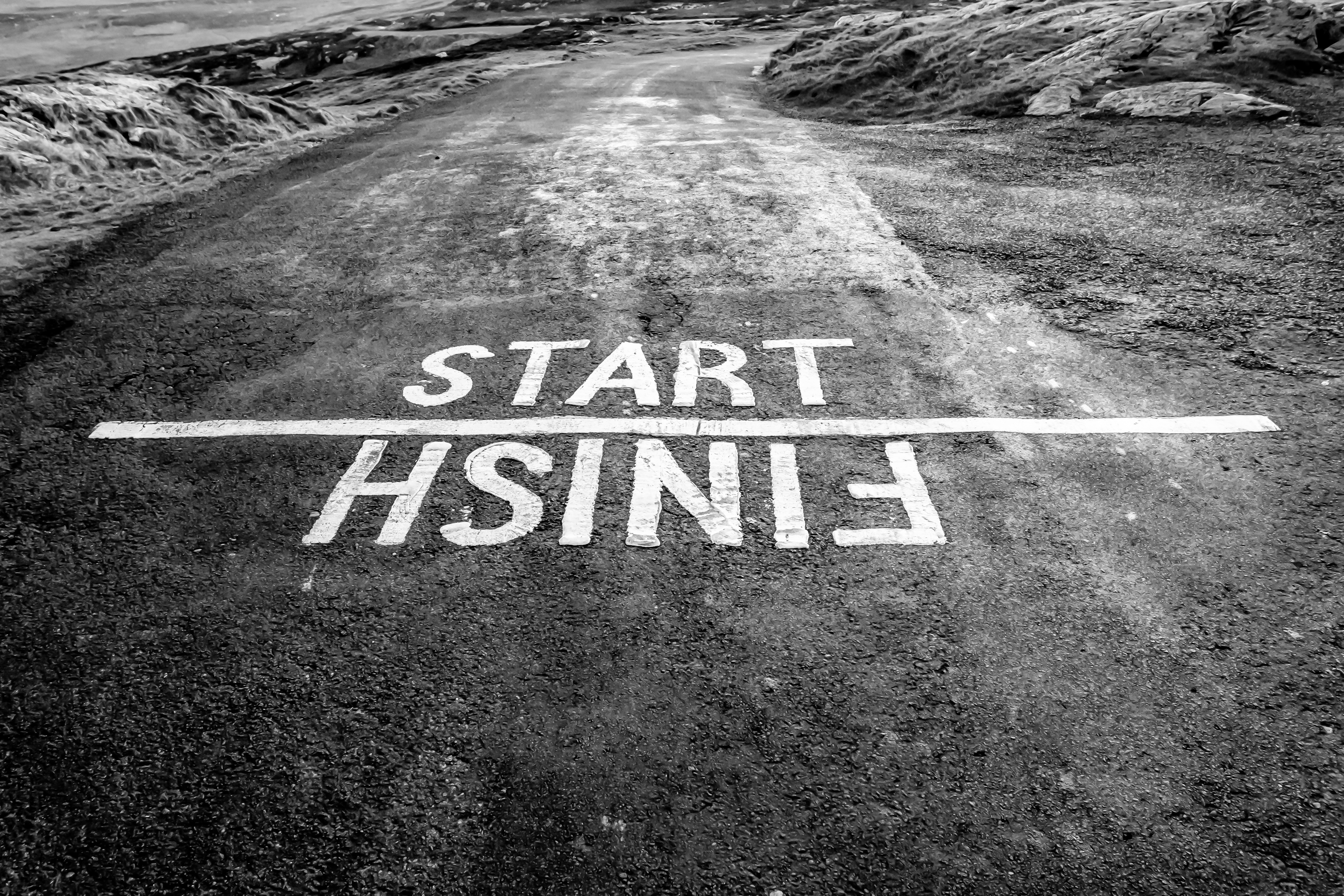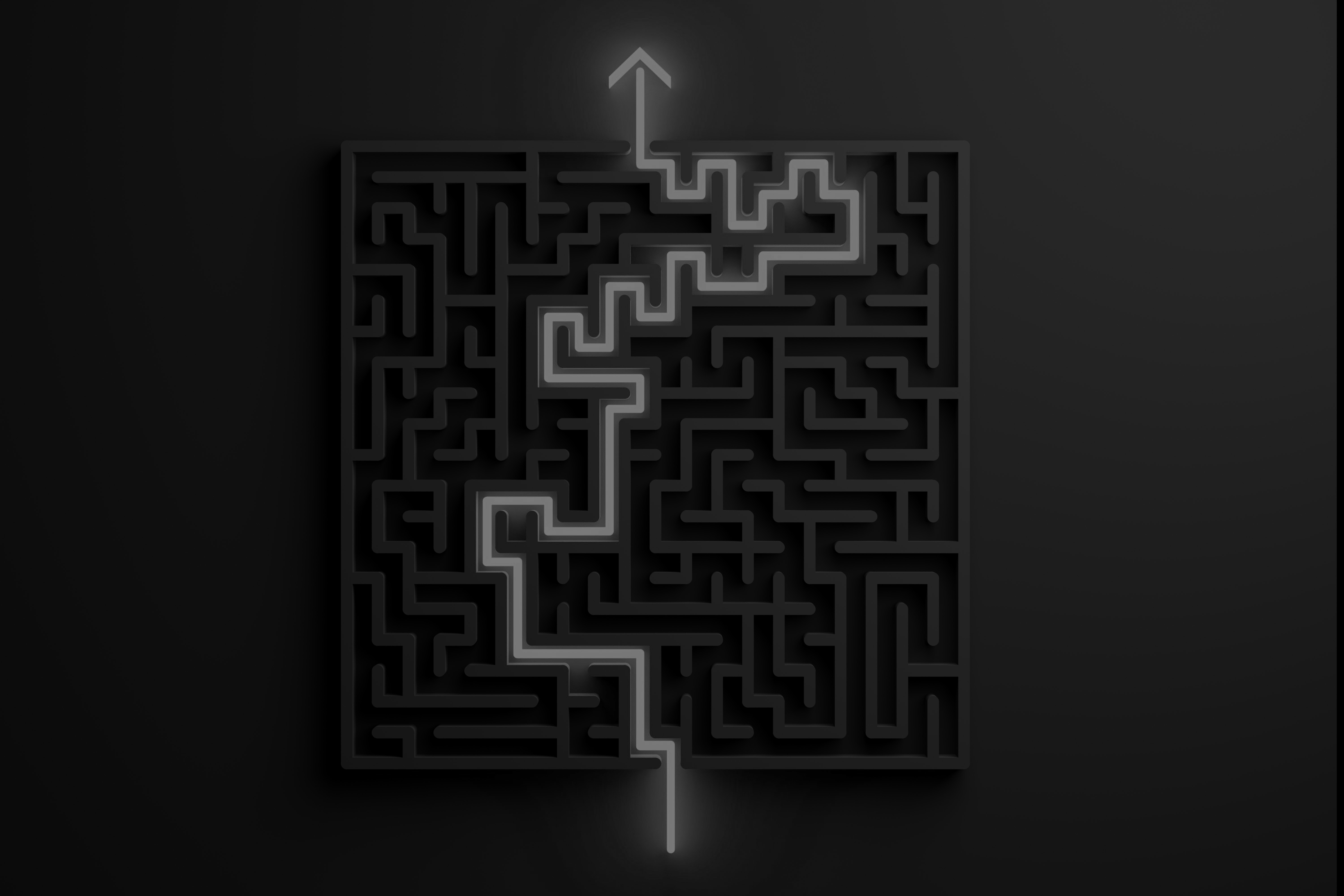
According to Baymard Institute, nearly 70% of online shoppers abandoned their cart in 2021. Why does a customer spend hours shopping and adding products to their cart just to leave at the last minute? Why is it taking several steps to get from point A (deciding they need something) to point B (making a purchase) when it should only take one? No matter what the product is or who is making a purchase, every customer goes through a journey to make a buying decision. Do you understand what journey your own customers are going through? Should you?
In this article we will cover:
By reading this article, you will understand your own customer journey and the places of highest impact during the decision making process. When you master the customer journey, you can increase your closing rates while decreasing your customer acquisition costs.
In its simplest terms, the customer journey is the process that a customer goes through when they decide to make a purchase. It may seem simple, but when we look deeper into it, the steps a customer takes can be quite complex.
Understanding your own customer journey puts you directly in the mind of your consumer. Being clear about why a customer makes a particular choice, and knowing how customers feel, pushes you to improve how your company functions. It provides you with an opportunity to find the friction points throughout their customer journey, making them easier to fix.
The key here is to recognize that the more of a positive impact you can make across the buyer’s journey, the more likely you are to win the purchase. According to SalesForce, 80% of customers consider their experience with a company to be as important as the product they purchase. Do your customers enjoy the experience they are having with your company and do you know that for sure?

All customers go through a similar process every time a purchase is made. There are 3 steps in a customer journey: awareness, consideration, and conversion.
The first stage of the journey is awareness. This is where a customer becomes aware of a pain or problem they are facing, and they look to educate themselves on the potential solutions. The pain can be big, or incredibly small. A buyer might consider a dozen solutions, or just one. They might choose from a host of competing providers, or just the first one they find.
What consumers are doing: During this step, consumers are probably conducting initial research about the problem itself. This can be researching solutions to problems using keyword searches, reading blogs and news articles, browsing online forums, and encountering new brands. They’re learning more about the problem and becoming aware of the solutions that are offered, although they’re not necessarily comparing their options just yet.
What you can do: You might think there’s not much for you to do as the consumers are doing all the heavy lifting, but now is the perfect time for customers to encounter your brand for the first time. It’s also the ideal situation for customers who have used you before to see your brand and potentially recognize you from other places. You do not want to ignore the importance of brand awareness. You have to already be where the potential customer is searching for solutions.
There are many ways you can enhance your brand awareness. You can be a voice of authority with an educational blog post or video and provide the very solution or information they’re looking for. You can entertain your audience with social media posts and videos that engage them and give them reasons to keep coming back to you. Creating content that adds value to the consumer is absolutely vital in this initial phase.
The consideration stage of the customer journey is where customers start looking for the different options that are presented as a solution to their problem. It’s during this phase that companies focus on promoting their products or services, striving to attract potential buyers and make it to the top of their alternatives list.
This is a place where every impression you make counts. It’s where consumers are interacting directly with your brand and comparing you to your competitors. Each brand’s goal is to entice the buyers to stick around for the next step of the journey.
What consumers are doing: Consideration consists of consumers researching specific brands and products, rather than a general solution or an answer to a problem. They compare their options by observing the specifications and features that make your product or service unique, examining the customer service experience you are offering, and reading previous customer’s reviews.
What you can do: Make constant improvements to optimize your user experience. Determine each of your touchpoints across your ads, social media, and ecommerce platform, and find places for improvement in your overall UX.
Little things like making sure the descriptions and processes are clear and that all of your buttons and website features work correctly make a massive difference when someone considers you against a competitor.
Content you produce has maximum impact if you are taking the time to answer your potential customer’s questions. Provide the what, how, and why of your product or service to help your customer understand what your product is, how it solves their problem, and why they should use your product over any other.
The conversion stage is about getting your visitors to take a particular action. By utilizing a dedicated call-to-action (CTA), you encourage customers to make a purchase, subscribe to your lists, or enroll in your services. Now is the time to sell your product as the best solution to the problem the visitor is trying to solve.
This is the defining moment during the customer journey. Potential customers have been doing their research and making their comparisons, and they’re ready to narrow down their favorite options and make the choice. The conversion stage is your final shining moment to get your visitors across that finish line.
What consumers are doing: During this phase, consumers are considering every factor they can. Things like price vs. value offer, customer service experiences, and if they trust a brand or not all play a role in their choice. It’s not simply about the product description.
Ultimately what a customer wants is to support a trusted brand they know will provide a quality solution to their pain or problem.
What you can do: Look beyond the shopping cart and find ways to add value to your customers. Offer a free gift with a purchase, a discount if they’re a first time customer, or an incentive for repeat purchases. Think outside the box to give them a reason to be excited about shopping with you.
Create product specific landing pages that will make it easy for customers to purchase your products. Include case studies, demos, trials, and any other educational information that they may not already know. This is also a great place to offer any discounts that will help your customer make the final decision.
Pro Tip: Provide a clear return policy with excellent customer service to create a process that is easy and painless with little risk.

You may be wondering about how the customer journey works differently between Business-to-Consumer and Business-to-Business purchasers. Both go through identical steps, but the difference lies in the specificity and outcome of the customer’s purchase.
Business to consumer (B2C) buyer’s journeys are the most straightforward. It also helps that we’re all familiar to some degree with B2C from our own purchasing habits.
As an example, imagine your company sells budgeting software directly to consumers. A buyer’s journey from the consumers perspective might look something like this:
Awareness – A buyer notices that their bank balance always seems to be dropping faster than they anticipated. They want to be responsible with their money, so it’s frustrating and stressful to feel like their financial standing is subpar. The buyer looks through their statement history and finds that small purchases are adding up faster than they had thought. There isn’t one clear thing they need to change.
They start searching online for budgeting information and guides. While reading blogs and watching videos they notice that budgeting apps and software are often mentioned. They think that could be helpful!
Consideration – The buyer searches online again, this time for more specific information. “Best budgeting apps for Mac” might be a search. Maybe they even ask friends for recommendations. The buyer finds some options online, gets some ideas from friends, and makes a list of their top choices.
Conversion – The buyer compares the products, the company values, the trust they have in each brand, and the user experience each one is offering. They narrow that down and ultimately choose the company they like best that has the app they think fits their needs.
Just like B2C, the Business to Business (B2B) buyer’s journey starts with identifying a need. Where they diverge is in how specific and active they are in identifying their solutions. Where a B2C customer might be a single person casually looking for general help with a problem, a B2B customer will actually be a group of decision makers proactively searching for a solution to fulfill a specific need as part of their business strategy.
Let’s compare to our previous example:
Awareness – Where the B2C buyer just happened to notice their budget trouble, the B2B customer team is looking to specifically improve the efficiency of their financial reporting. They actively seek to invest in software that can integrate with their current business systems and make their financial reporting process simple. They are specific in the need that matches their business strategy.
Consideration – The B2B buyers have their specific need in mind and search for a product or service that meets the requirements set into their strategy. They look for a solution that matches their specifications, compare reviews, prices, and effectiveness, and find what will work best. Their purchase is based on strategy, not emotion
Conversion – Once cost, functionality, and effectiveness have been assessed, the customer purchases the software that makes the most sense for their goals. The process is intentional and direct. They are fully informed and educated about what they want, but often take longer than B2C customers as they have more steps they must take within their organization before they take that final step.
For both B2B and B2C clients, once you understand your customer’s decision making process, you can easily identify the places where you can have the greatest chance to become their solution of choice. This clarity also opens the door to how you can connect with them and the best way to meet their needs.

An important question we need to ask ourselves when observing the customer journey is where in the journey we should spend our time and marketing dollars. The unsatisfactory and short answer is, it depends.
Most often, however, we recommend building your funnel from the bottom up if you’re just starting out, as the decision stage is the only place you can really expect to make money today. And then with that money, build up through the funnel to reduce cost per acquisition. But there are some things to consider before you establish a long term plan.
Customers at the beginning of their buyer’s journey are a bigger pool to attract, but are also more difficult to attribute. Customers at the end of the journey are easier to attribute, but are a much smaller pool, will cost more per acquisition, and are much more likely to be targeted by groups of other competitors. The answer to which is better is entirely dependent on your goals, what you already have built out, and the cost you’re willing to pay.
Let’s look at both options.
Beginning stage customers are those in the awareness and consideration stages of the customer journey. The key idea to acquiring customers at the beginning is that there is a large pool, but they are much harder to attribute.
What Does Attribution Mean?
Put simply, marketing attribution is figuring out which marketing tactics are directly contributing to sales or conversions. Being able to accurately attribute which of your marketing tactics are creating the highest conversion rate means you can more effectively optimize marketing spend, increase ROI, and improve personalized content. This is difficult to do with customers who are just researching solutions or comparing different brands as they have a more indirect relationship with your company.
The upside to capturing customers in the early stages of the customer journey is that you will have fewer competitors vying directly for their attention and you can greatly reduce the costs of your “end of the funnel” marketing tactics. If they are following you from day 1 of their process, you will not need highly targeted and costly tactics to capture them at the end.
Though this is a more complex path to take, it can result in a much lower customer acquisition cost overall.
The customers at the end of the journey are most “buy ready” but are also the smallest group and most sought after.
Those in the conversion stage are the ones that most companies are aiming for. It’s a more direct path to get to them and they are ready to buy right now, which is ultimately what businesses want. Someone ready to buy your product or service right now is the ideal customer. They’re easier to target, already have you in their sights, and want what you’re offering.
The downside, however, is that everyone else wants them too which means it’s going to be a heavily saturated playing field. This, in turn, means you’re going to have to out-bid your competitors which leads to higher ad spend and higher costs per conversion.
On one hand, we have a consumer who costs less, but is harder to connect with directly. On the other, is a consumer who is easier to target but is surrounded by more competition and is more costly. Deciding which to go after depends on what your current marketing goals are, what you already have built, and the budget you have available. Exactly how much you invest in each stage will be on a bunch of different variables. But, if you don’t have a path for buy-ready customers, that’s where you need to start.
Consider where you are and decide which is the best choice for you right now. It’s not permanent and will most likely change back and forth over time as your own circumstances change.

The customer journey is a complex path that consumers take when making a purchase, and understanding your own customer journey is a phenomenal way to align your marketing efforts to meet your customers where they are.
Whether in awareness, consideration, or conversion, you have the opportunity to connect with your customers and provide an experience that will build their trust in your brand and create a lasting impression. Whether B2B or B2C, identifying each step provides you with the perfect places to provide the highest impact possible.
Knowing the stages of the journey also gives you insight into where and how to reach the customers you want to go after. Be it customers at the beginning of the process, or those ready to buy, you know where they are and can discover the tactics that will work best.
If you want help crafting the marketing tactics that will attract customers at every stage, RELLO is ready to help.
Fill out our form and a member of our team will be in contact soon. Let’s discuss your marketing needs and see what RELLO can do for you.
Was this post helpful? Share it online.